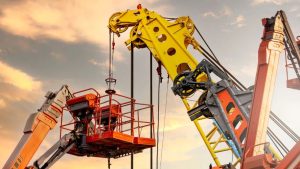Table of Contents
In the UK, digital adoption is transitioning from pilot breakdowns to silent capabilities. Manufacturers, logistics hubs, and service organisations converge on AI planning and shop-floor assets, reducing friction.
This shift isn’t taking jobs; it’s creating new ones. UK analyses note AI intent but poor value capture, with management practices, integration, and skills emerging as deciding factors.
In material-handling cells, industrial lifting equipment integrates sensors and analytics. Ergonomic design joins these systems to cut handling risk and optimise flow efficiently today. This blends physical action with digital control for stable throughput.
Safety and ergonomics research confirms reduced spinoff loads and handling effort with vacuum-assisted systems. It’s driving proportionate applications, keeping workplaces safer, and reducing downtime.
AI Embeds Into Everyday Workflows

Current trends favour “boringly useful” AI, like predictive analytics in ERP systems today. It’s ML scheduling, automated documentation, and agents handling ordes and exceptions. UK commentary signals high interest, and it’s showing experimentalism and measurable outcomes. Governance and skills forestall drift and shadow AI.
Firms that combine adoption with effective management practices also experience higher adoption rates and reap greater benefits in productivity. As AI extends into the physical operations, it will focus on connected conveyors and lifting cells.
Here, industrial lifting devices integrate with quality inspection and inventory control systems and connected analytics. Modern models incorporate telemetry to enhance real-time condition awareness capabilities.
In this context, elephant lifting equipment appears with a modular handling architecture and human-centred design, without fanfare or hype.
Predictive Maintenance Becomes Default
Hidden damage, falling sensor prices, and mature analytics are pushing condition monitoring and PdM into the mainstream. Surveys show the widespread application of condition monitoring, leading to a meteoric growth of dedicated PdM teams.
Research in the industry has demonstrated that PdM is associated with materially reduced downtime and maintenance costs. The economics ring in for the UK, where unplanned stoppages can often outweigh capital budgets by a large margin.
Implementing PdM on hoists, manipulators, and industrial lifting applications delivers early alerts. It supports wear detection, safer operations, and smarter spares.
Coupled with digital records, industrial lifting devices manufacturers can optimise the service intervals and ensure higher availability. Over time, these feedback loops are used to improve products that families used to lift elephants.
Digital Twins Inform “What-If” Decisions

Factories, warehouses, and the built environment are embracing digital twins at scale today. It’s moving from proofs of concept to decision-making tools. Dividends from commissioning support, scenario testing, and training at scale are likely significant.
They’ll drive the UK market’s growth strongly over the decade. Connected to operating data, twin modelling finds a balance between throughput, energy, and safety. It’s also de-risking changeover during critical process updates.
Using material-flow twins for reach, cycle time, and ergonomic quantification helps validate layouts and tasks early in development. Twins include cranes, manipulators, and industrial lifting devices, which undergo rapid prebuild testing.
Industrial lifting devices manufacturers draw insights from field data for continuous design refinement. Closing the loop ensures it’s aligned with next-gen elephant devices.
A Better Finish Line Starts With Safer Starts
It’s increasingly clear that the competitive edge depends on reliable building blocks that are assembled with care today.
From cells to explainable AI, via secure data plumbing to trained teams. That translates to standardised integrations, quantifiable safety and uptime improvements, and incremental upgrades that compound.
As ergonomic research continues to prove the case for assisted handling, confidence in adoption grows. At the same time, the ability of analytics to curtail unplanned downtime shows results that operations teams shouldn’t ignore. The best approach keeps tools unobtrusive while performance improves, one lift and one data handshake.


